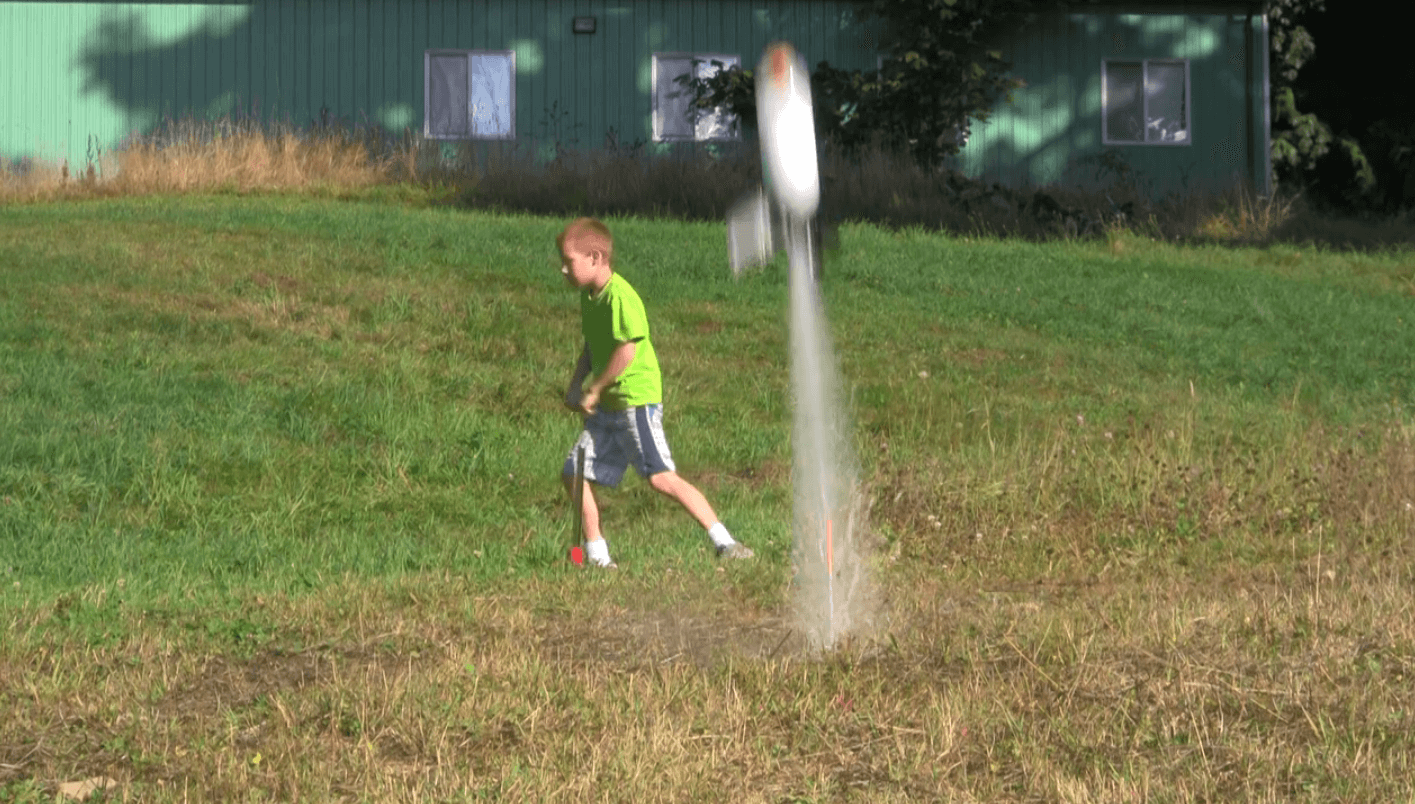Although AntiGravity water rockets are made to be as safe as possible to use, there are some very important rules you will need to follow for the safety of yourself and others. Water rocket safety is mostly just common sense, but nonetheless it is important to keep these in mind as you use your rocket, to ensure that you have a safe and enjoyable rocketing experience.

Water Rocket Safety: How Can You Use Your Water Rocket Safely?
1. Only launch with adult supervision, in a wide open field, far away from trees, buildings, roads, people and electrical wires.
2. Never put anything in your water rocket but air, water and sometimes non-toxic handwash-type dish soap.
3. Never launch your rocket at or near people, animals, automobiles, aircraft or buildings.
4. Never launch your rocket anywhere near aircraft landing or takeoff locations or into the path of an aircraft.
5. Never launch your rocket under overhead electrical wires or during a lightning storm.
6. Stay at least 20 feet away from the rocket when it is being pressurized, and insist that all other people also stay at least 20 feet away from it, in case the bottle bursts. Never use a launcher that requires you to be closer to the rocket than 20 feet (6 meters) during pressurization.
7. Don’t put any more than the recommended amount of water in any rocket bottle, or the rocket may lift off sideways.
8. Never launch your rocket indoors. If it bursts the sound reflecting from the walls can be dangerously loud for your ears, and the ricocheting rocket bouncing off walls and ceilings can damage fixtures and frighten people. The stream of exhaust water can damage indoor surfaces and be unsafe around electrical connections.
9. Only use a hand-powered pump to pressurize your rocket. Never use an electric or automatic pump or compressor. An automatic pump left unattended can cause a bottle to burst from over-pressurization.
10. Only use plastic pop bottles that have previously been used to hold fizzy pop. Never use water bottles because they are too thin and cannot hold the required pressure. Never use glass bottles, because of the danger of heavy impact or sharp broken glass shards.
11. Never climb up in dangerous places or to dangerous altitudes to retrieve a rocket. It is better to lose your rocket than to jeopardize the safety of yourself or others.
12. Never launch your rocket on a windy day. It may be blown sideways away from the safe, wide-open launching & landing area you have chosen. Or it may be knocked over by the wind during pressurization and lift off sideways.
What if I Run Across a Situation that’s Not on This List?
During the course of your rocket experience you will probably run across some situations that don’t match any of the above. Always decide in favour of safety for yourself and others. That’s what water rocket safety is all about!
There may be other precautions to keep in mind that apply to specific types of rockets. These precautions will be included in the instructions for each individual type of rocket.